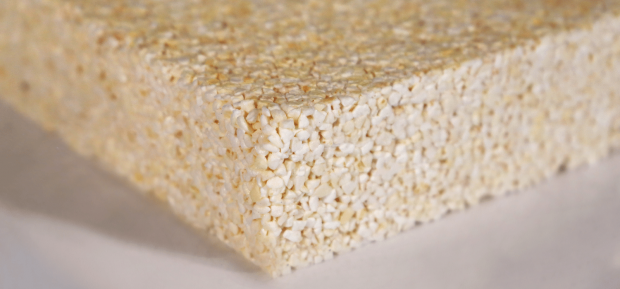The construction industry is continuously innovating to create sustainable solutions for the future, and one intriguing material emerging from these efforts is made from popcorn.
Remarkably, structures built with these popcorn-based materials reportedly match those constructed with petroleum-based counterparts in terms of quality.

(Photo : Spring Wise/Karl Bachl GmbH & Co. KG )
Bioconstruction
Bioconstruction has become increasingly popular due to the widespread dedication of the architecture industry to environmentally responsible techniques. This strategy, sometimes called sustainable construction, incorporates the operational procedures of the circular economy and uses materials that are kind to the environment.
Homes that are constructed out of wood, plastered with mud or lime, and insulated with straw bales that have been compressed stand out as typical examples of this approach. In addition, advancements continue to take place, and now corn is emerging as an unexpected participant in future manufacturing.
Surprisingly, the most prevalent variety of corn used as a grain for everyday sustenance has changed into a feasible alternative for environmentally responsible buildings. Scientists have successfully extracted corn fibers, allowing for the creation of an insulation material that is efficient and kind to the environment.
Construction has traditionally relied on wood, mud, and compressed straw as its primary building materials. These materials offer environmentally friendly solutions that are designed to reduce their influence on the environment. According to a paper published by the Swedish business Aritco, a house constructed with popcorn appears to be a fantasy and an actual possibility. The '100-Year-Home' is a project demonstrating how homes have evolved to accommodate climate change's effects. The innovations that are being proposed would reportedly make it possible for homeowners to create their own energy, save money, and maintain their safety.
On the other hand, corn insulation, manufactured from renewable materials and decreases heat waste and carbon emissions, is the breakthrough in climate change mitigation. This material, developed by a scientific team, presents new opportunities in the building industry and challenges the widespread use of insulation substances derived from petroleum. Considering the importance of sustainability in today's world, homes constructed from maize could be a step in the right direction toward more environmentally friendly building practices.
Also Read: 6 Helpful Strategies to Avoid Construction Delays
Insulation Capability of Popcorn-Based Material
Researchers at the University of Gottingen have devised a technology that permits popcorn to be converted into an environmentally acceptable building insulation material. According to the researchers, these materials could limit the use of less environmentally friendly products to keep structures warm and cut down on heating expenditures.
When a structure has adequate insulation, it reduces the amount of heat that must be provided by means of oil and gas, which in turn results in a reduction in carbon dioxide emissions. As stated, the construction industry is predominantly controlled by conventional building materials, such as mineral fibers and plastics, which comprise approximately 90% of all insulation products.
Moreover, using granular popcorn, the group of researchers succeeded in creating an insulation material for the structure's exterior. This innovative insulation is effective, water-repellent, and offers excellent protection against fire. It is of a quality comparable to that of petroleum-based versions that are commonly employed, and popcorn-based insulation is utilized as a component of the outside shell of a building. Thus, in addition to aiding in reducing thermal waste, the popcorn insulation further mitigates carbon emissions due to its sustainable composition derived from plants.
Related Article: Green Cement Emerges as a Solution to Combat Carbon Emissions







